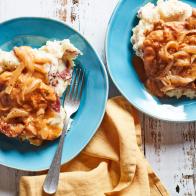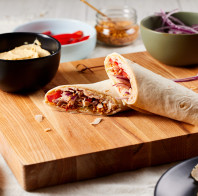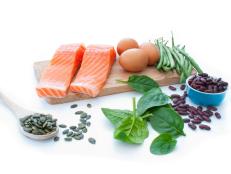Why You Should Join a CSA This Winter
Get seasonal produce sent right to you door, no matter what the weather forecast.

bhofack2/Getty Images
Winter is upon us and seasonal produce options are getting real slim in northern regions of the United States. The cooler months are usually synonymous with carrots, apples, potatoes and maybe kale if you're lucky. Seasonal eating has a number of benefits, but it can be a challenge when there aren’t many produce options to pick from. Enter CSAs (short for "community supported agriculture"). If you’re not familiar, CSAs directly connect the public to local farmers by providing crop shares. As a CSA member, you’re able to purchase a share from one or various farms that collectively team together, and then you get regularly scheduled produce throughout the growing season. It’s genius.
Shares oftentimes go beyond produce and may include eggs, dairy, meat and other farm products. Depending on your household size, you can also customize the size of your box and include food preferences if there’s something you don’t eat. Once you’re signed up, you can pick up your box from pick-up points (in cities, it’s common for farmers to have different pick-up points for convenience) or get your goods delivered. It’s a great way to support local farmers, eat seasonally and save some money in the process since buying in season is usually more affordable. Some CSA’s also accept EBT and provide sliding scale membership for low-income communities.
With limited produce during the winter months, CSAs provide this neat box of whatever is growing locally. You’ll likely get more variety than the seasonal produce options available at the supermarket and it’s also cool to experiment with foods you may not have tried before. I like to see it as a Pandora's box, where each week I have an opportunity to explore new recipes and expand the types of foods I’m eating. If you’re still on the fence, here’s a list of the benefits of joining a CSA this winter.
You’ll be getting quality produce that’s harvested within days of delivery, which means that it may taste better and retain more nutrients. The longer fruits and vegetables spend being transported from farm to table, the greater the loss of important nutrients. Research indicates that some produce fares better at preserving its nutritional content when shipped long distances compared to others (this study observed that the vitamin C content for broccoli was almost twice as high in the fall compared to the spring!)
You’re supporting farmers, which helps the local economy. You also get to know the people growing your food. This allows for more transparency around food production. You’re able to ask about growing practices and communicate any concerns directly to the farmers.
It’s better for the environment. Your food doesn’t have to travel across the country (or come from other countries) to get to your plate, which means less greenhouse gasses. Also, when farmers have funds secured at the start of the growing season, they can better plan during harvesting so that less food goes to waste.
And then there’s the stuff that’s priceless, like feeling gratitude and connection. Eating locally can help us feel more connected to our food, which can foster a sense of gratitude and mindfulness during mealtimes.
As a registered dietitian/nutritionist and Certified Diabetes Educator, Wendy Lopez, MS, RDN, CDCES is passionate about accessible and culturally relevant nutrition education. She is the co-host of the Food Heaven Podcast, and the co-founder of Food Heaven, an online platform that provides resources on cooking, intuitive eating, wellness and inclusion. When not working on creative projects, Wendy also provides nutritional counseling and medication management to patients with diabetes.
*This article was written and/or reviewed by an independent registered dietitian nutritionist.
Related Links:


































